While I would never count the number of statues on display in any other museum I’ve visited, it’s hard not to count when describing the Norwegian sculptor Gustav Vigeland’s work on display in the 80-acre sculpture garden set in the lovely Frogner Park in Oslo. To sum up: the individual works total 220 bronze and granite human forms plus some strangely compelling wrought iron work. The entrance gates were the first to capture my eye.


Vigeland, was a well-known sculptor in Norway by 1924 when he began his monumental effort to depict the naked human form from childhood to old age in all its beauty and ugliness. The first section of the gigantic installation opened to the public in 1940, the year the Germans occupied Norway during World War Two. He and his workshop continued to be financed by the government despite the privations others suffered. The continued support is no surprise since he welcomed prominent Nazis to his studio and said he was “happy” to have German soldiers walk around the park because of their good discipline.
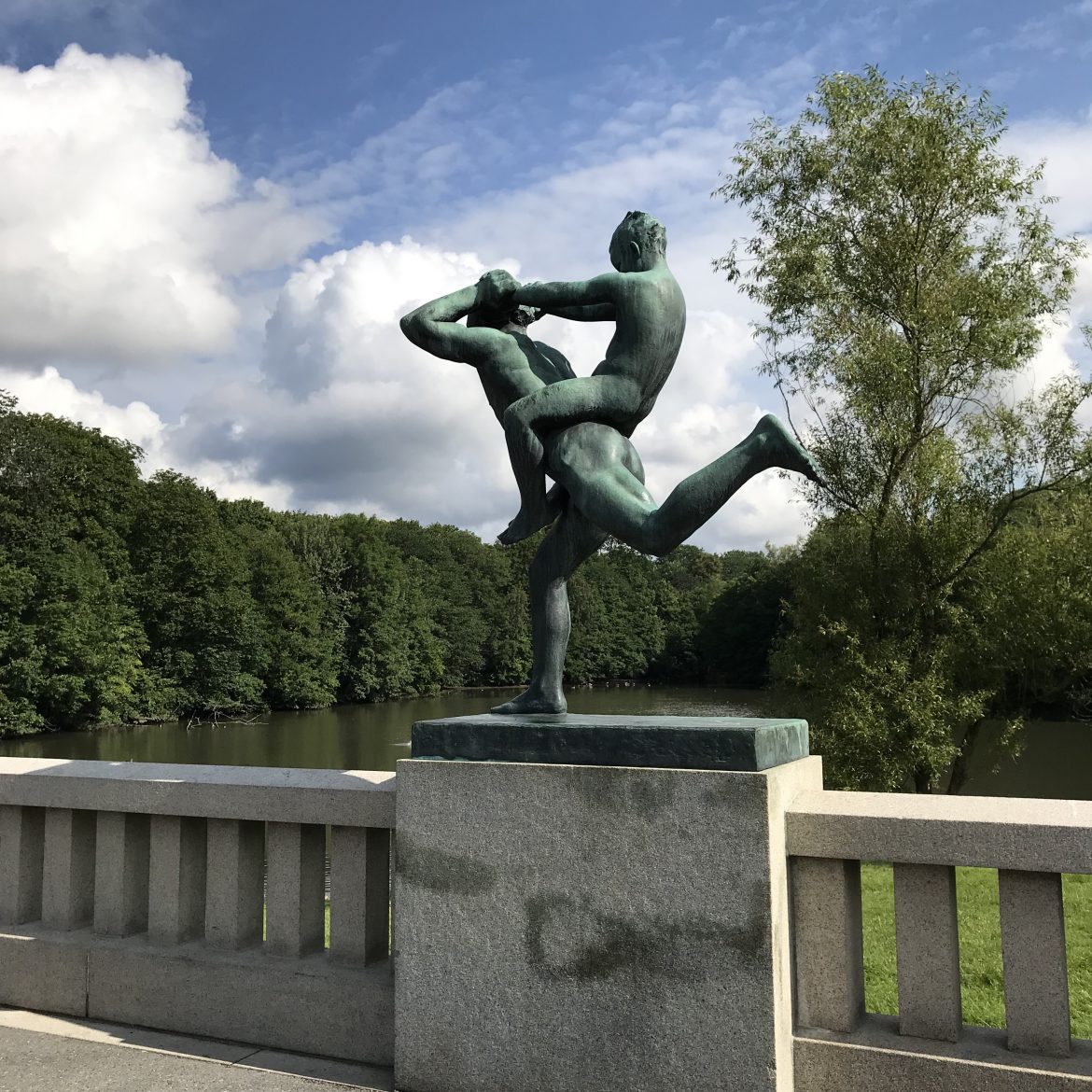
Times change: we joined crowds of local families and international tourists to pass through the wrought iron gates to stroll over a 320-foot long bridge spanning a lovely lake. The bridge is lined with 58 bronzes, each one evoking admiration of Vigeland’s creative genius along with laughs, frowns and gasps at his audacity. The sculptures in this area are in physique reminiscent of the Greek or Renaissance ideal most of us would admire – trim, lithe, in motion – as they depict human life in all its aspects from love and tenderness to violence against both adults and children.
it seemed to me the works in bronze would have been pleasing to the visiting occupiers when they contemplated the sculptures reflecting aesthetics of fascist art work with glorification of strength and fitness.

The bridge leads to a magnificent fountain surrounded by 60 bronze reliefs and sculptures of youthful humans intertwined with trees, some disturbing as they looked trapped and in danger of being subsumed into the tree like Daphne fleeing Apollo so magnificently depicted by Bernini in Rome; others seemed like lovers sheltered under the branches.


Beyond the fountain are the steps leading to the climax of the sculpture installation: The Monolith Plateau.
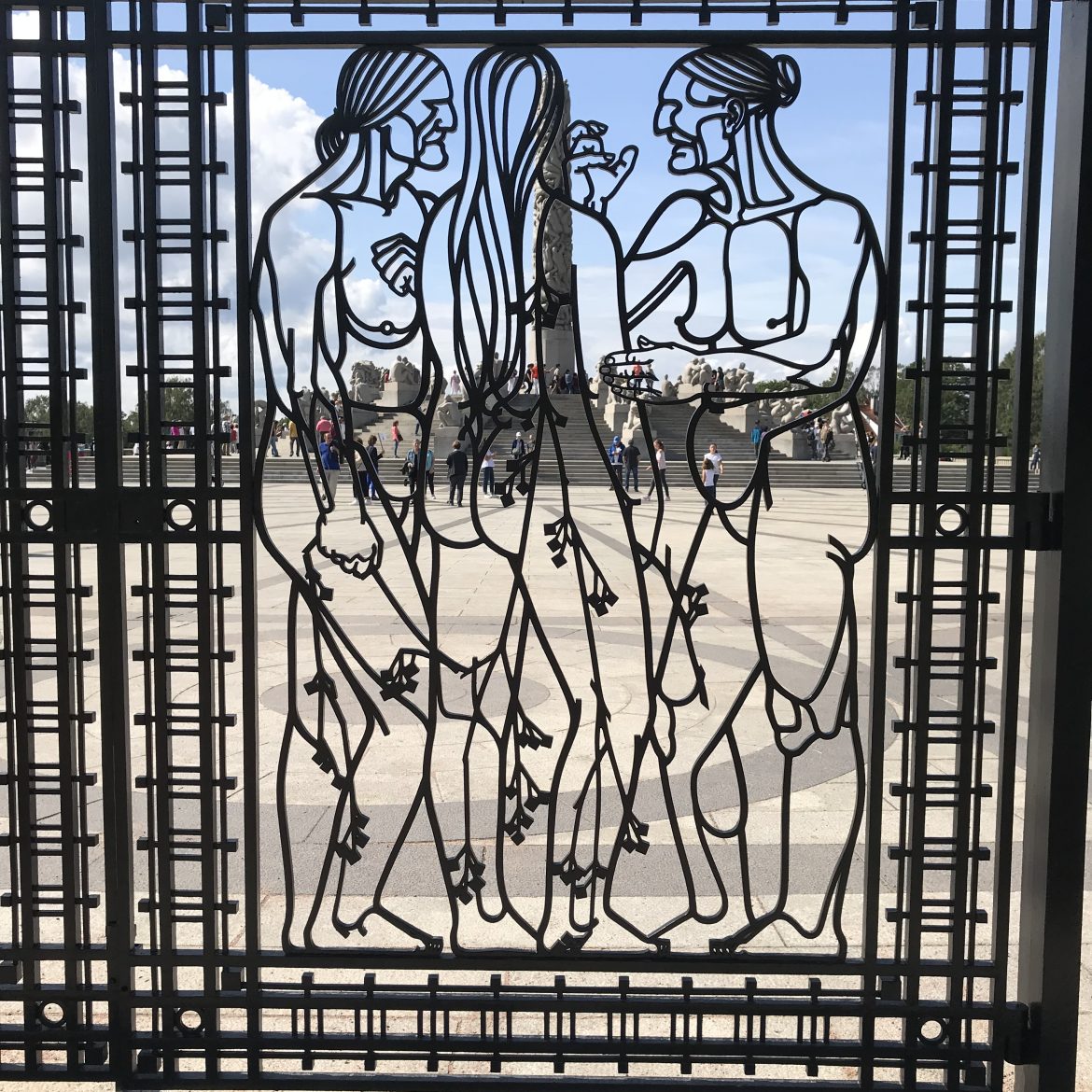
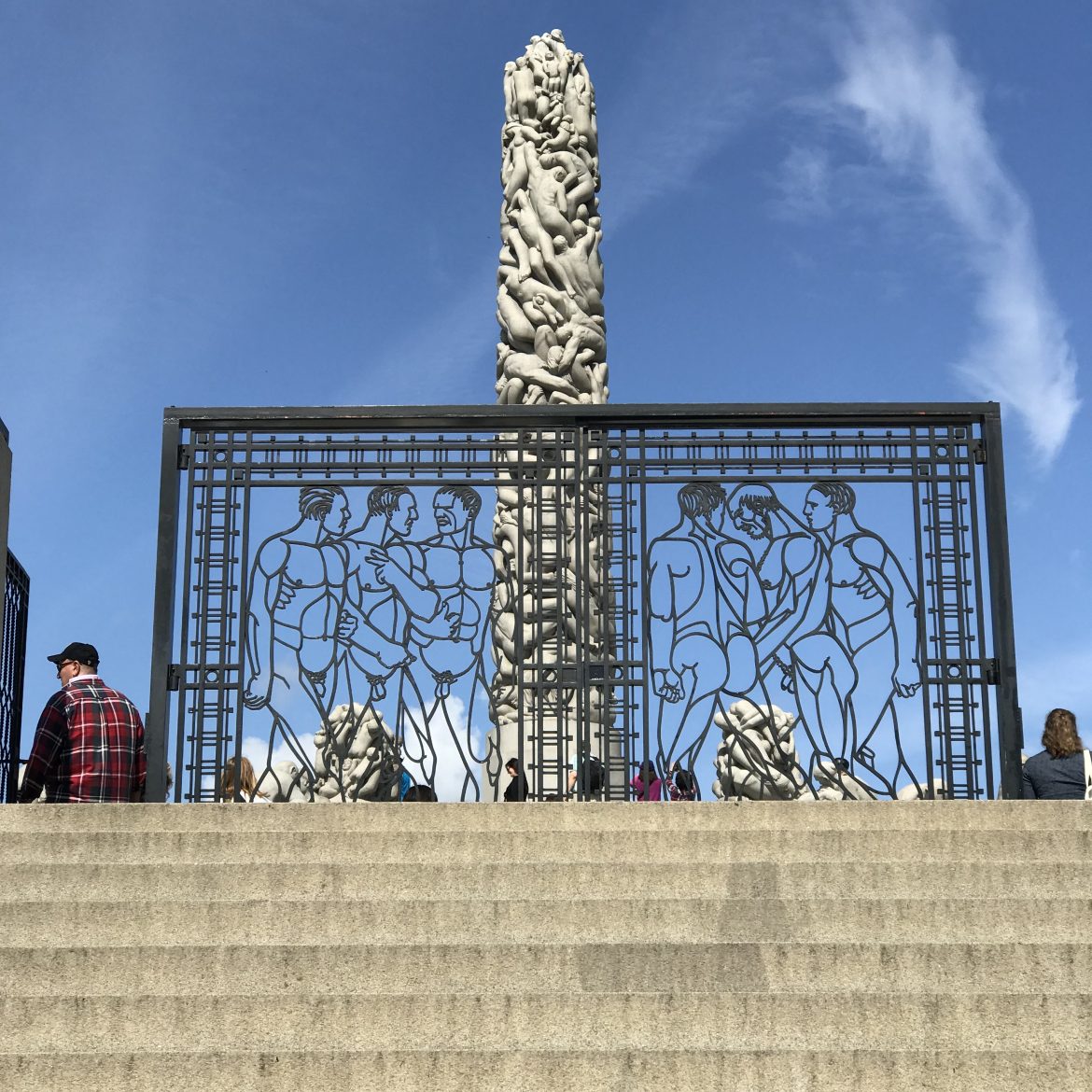
To reach it we passed by wrought-iron gates with human-figures outlined against the thirty-six over-sized granite groups that represent the circle of life. The figures are heavy, inert and impassive with vacant eyes in contrast to the bronzes. It is as if they awaited their preordained fate without protest. They reminded me of some of the fascist-era statues in Rome, although the Roman examples are not as bulky. One example is the set of four marble Naked Horsemen marking the four corners of the so-called Square Colosseum in the EUR area in Rome erected during the Mussolini era.
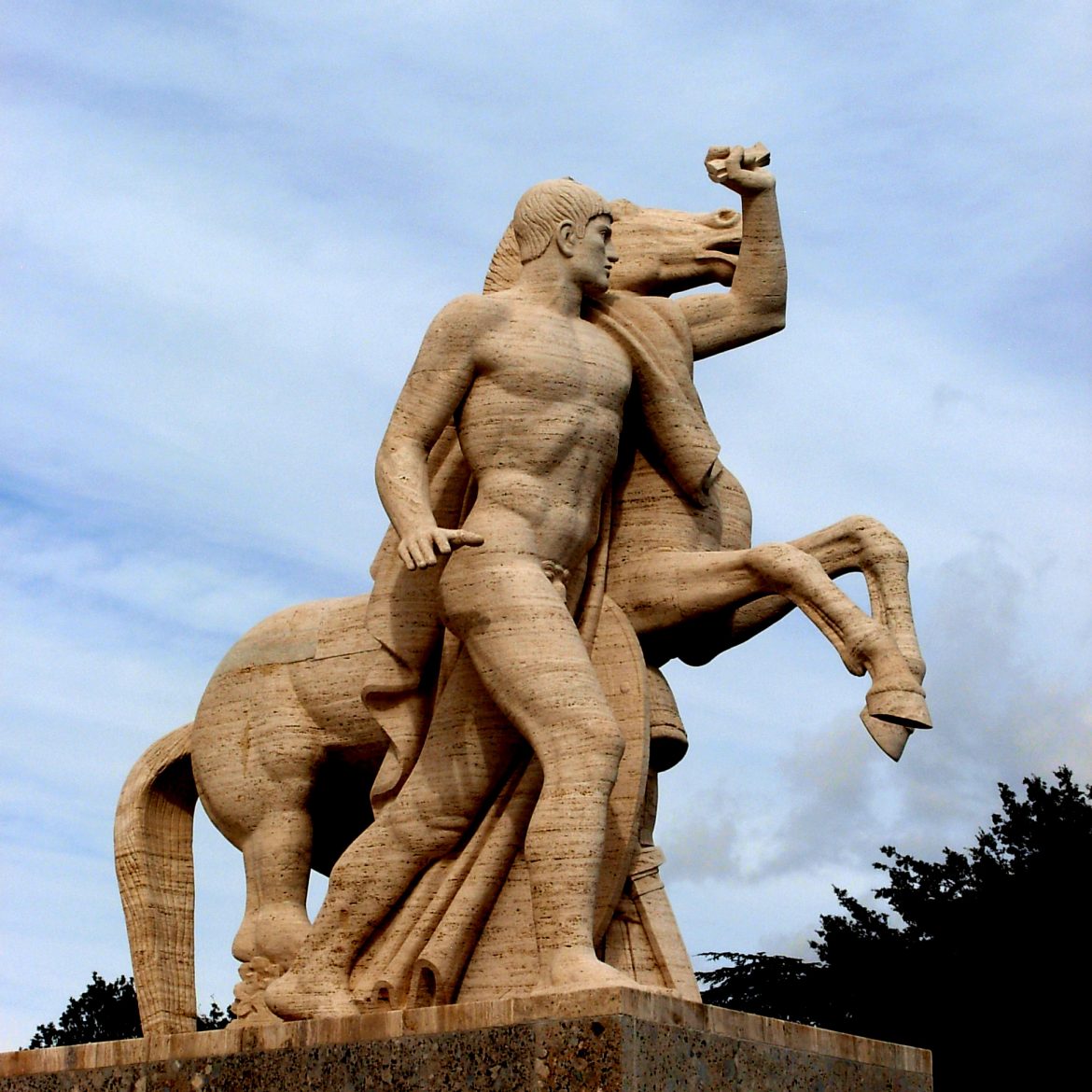
At least the Roman one shows some action.
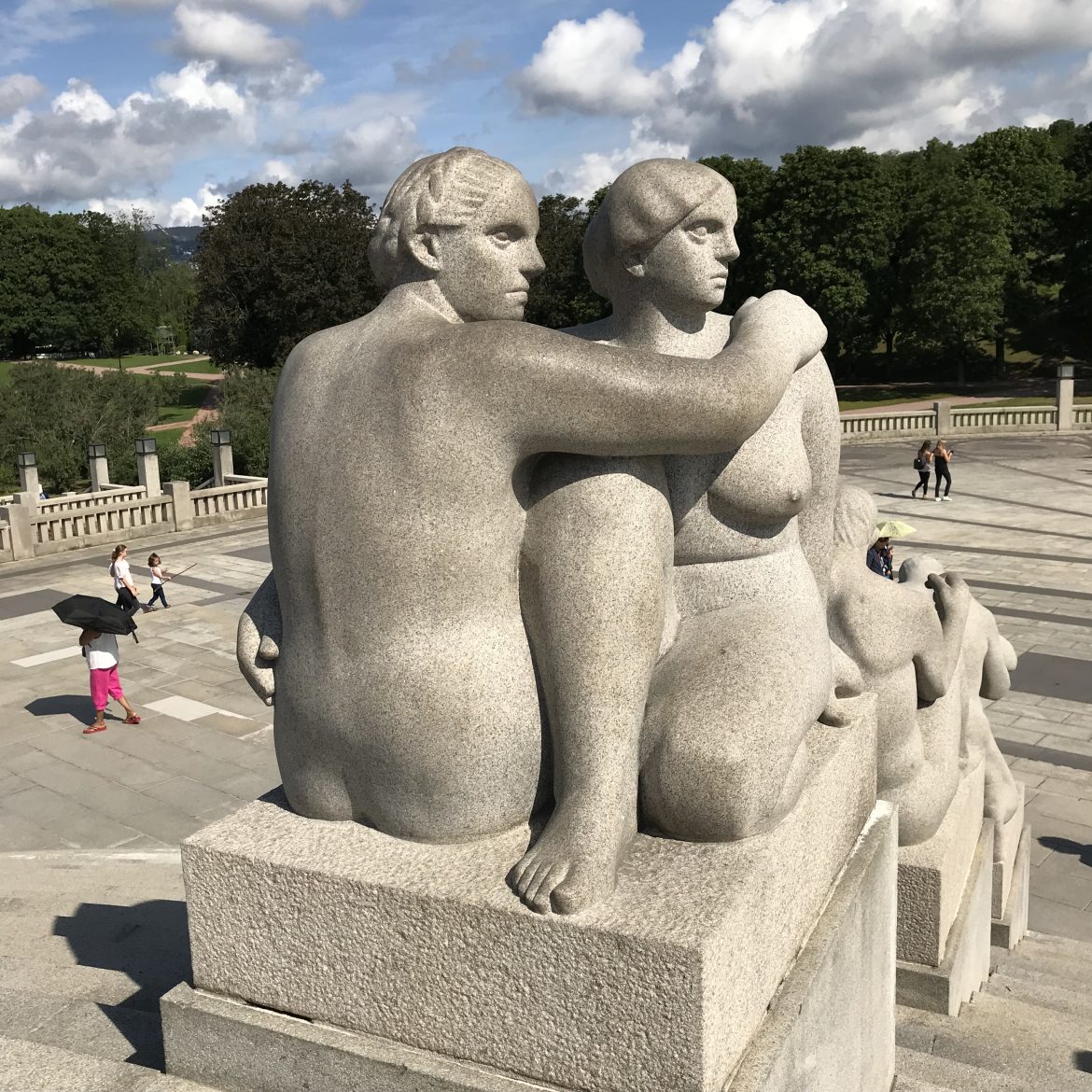
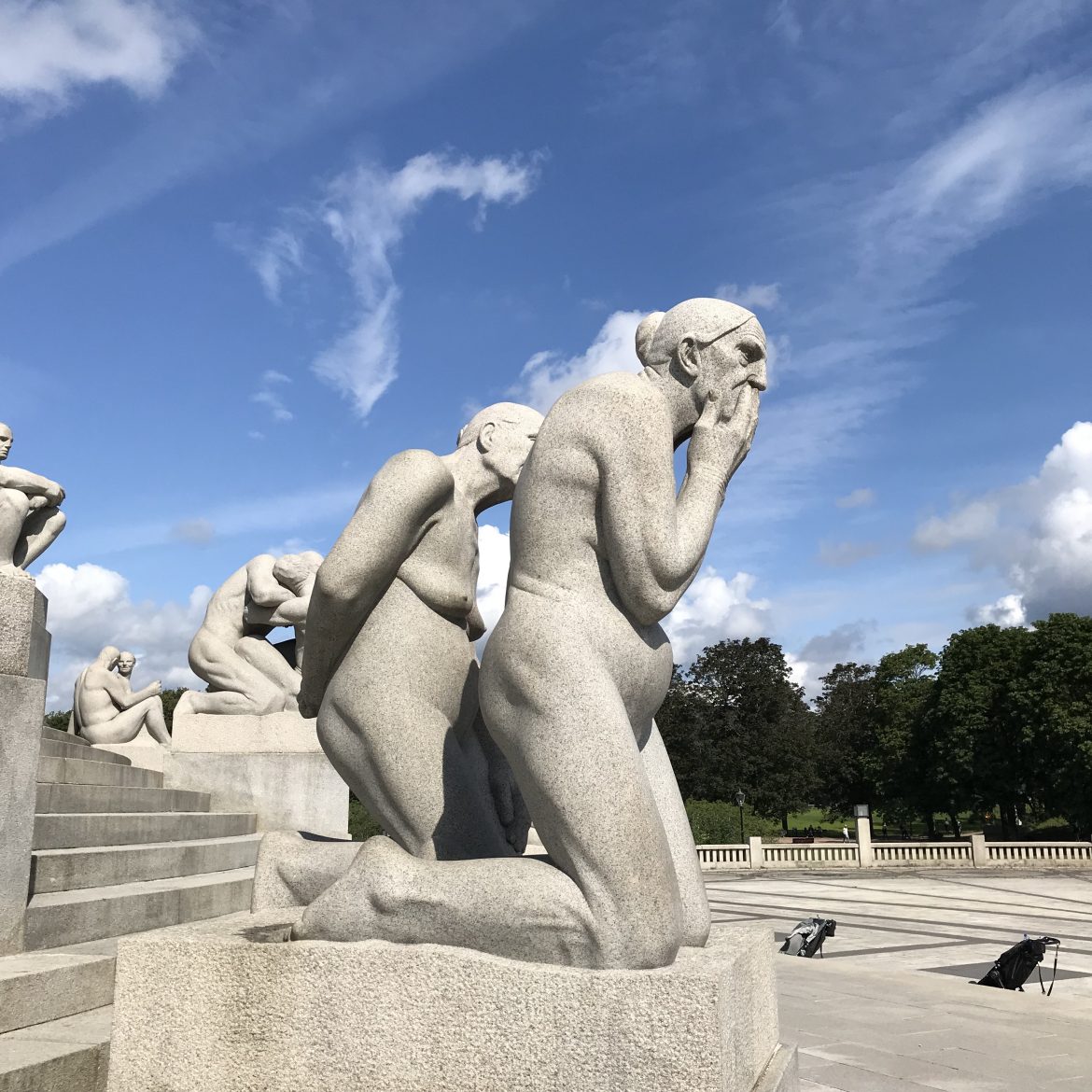
The Vigeland sculptures do not concern themselves with the centerpiece of the Plateau – a 46-foot high writhing mass of 121 intertwined figures – men, women and children all struggling violently to reach the summit of the phallic monument. What are they reaching for I wondered? Heaven, power, light, their potential, safety during the hardships of the war years? Whatever Norwegians thought during a cold and hungry Christmastime 1944 when it was unveiled, it still has immense power today.
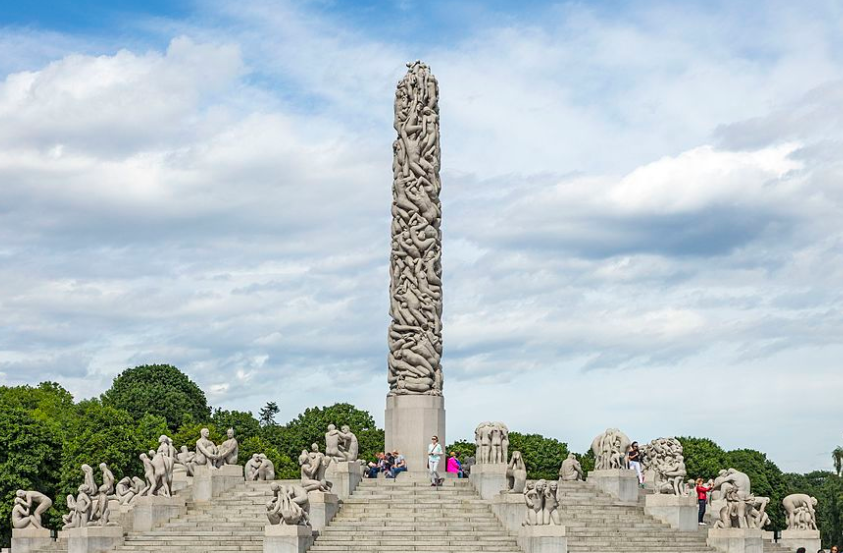
Are you one of those who turn away and let life take its course, or part of the struggle?
All photos except for the last are copyright Judith Works; the last photo is courtesy of Wikipedia.
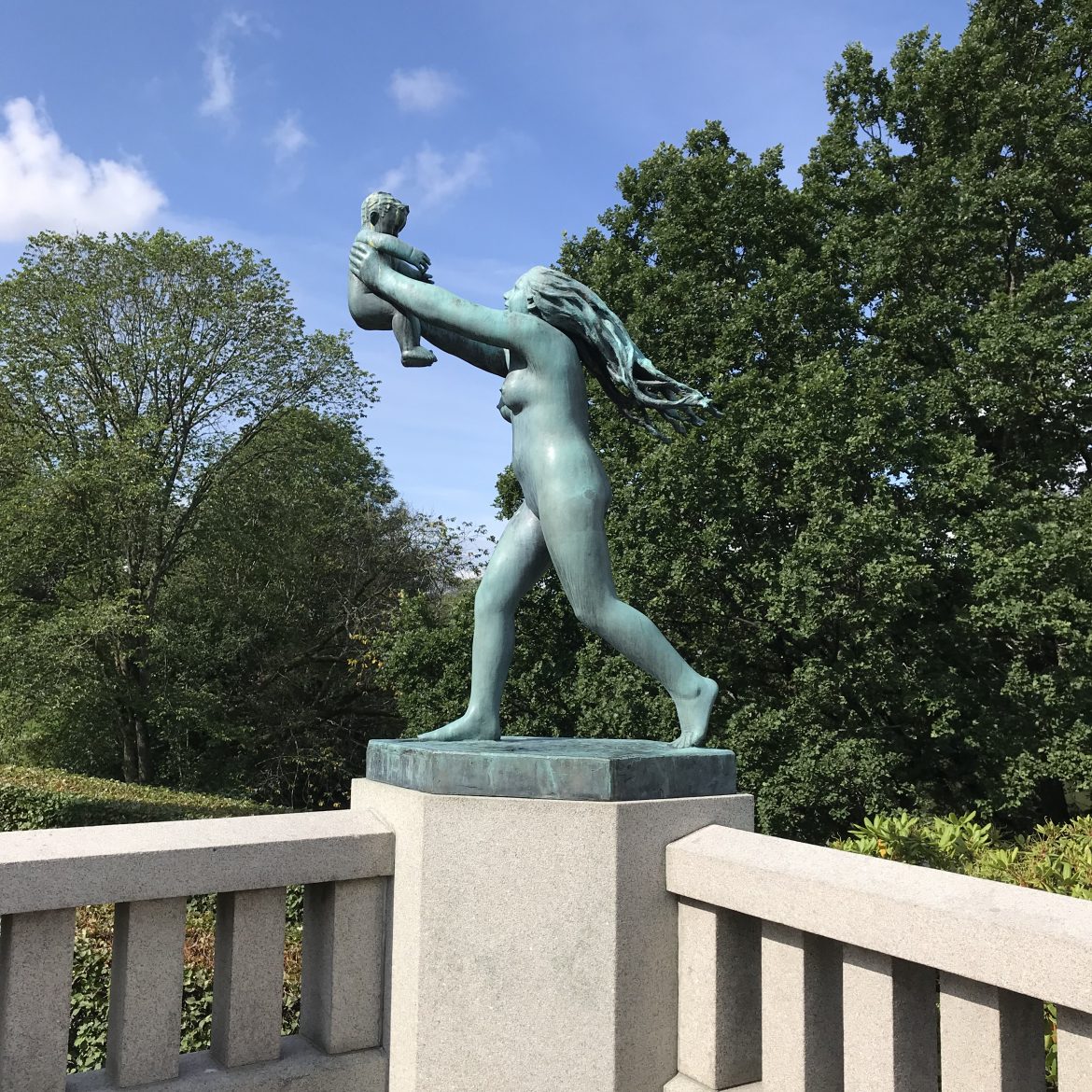
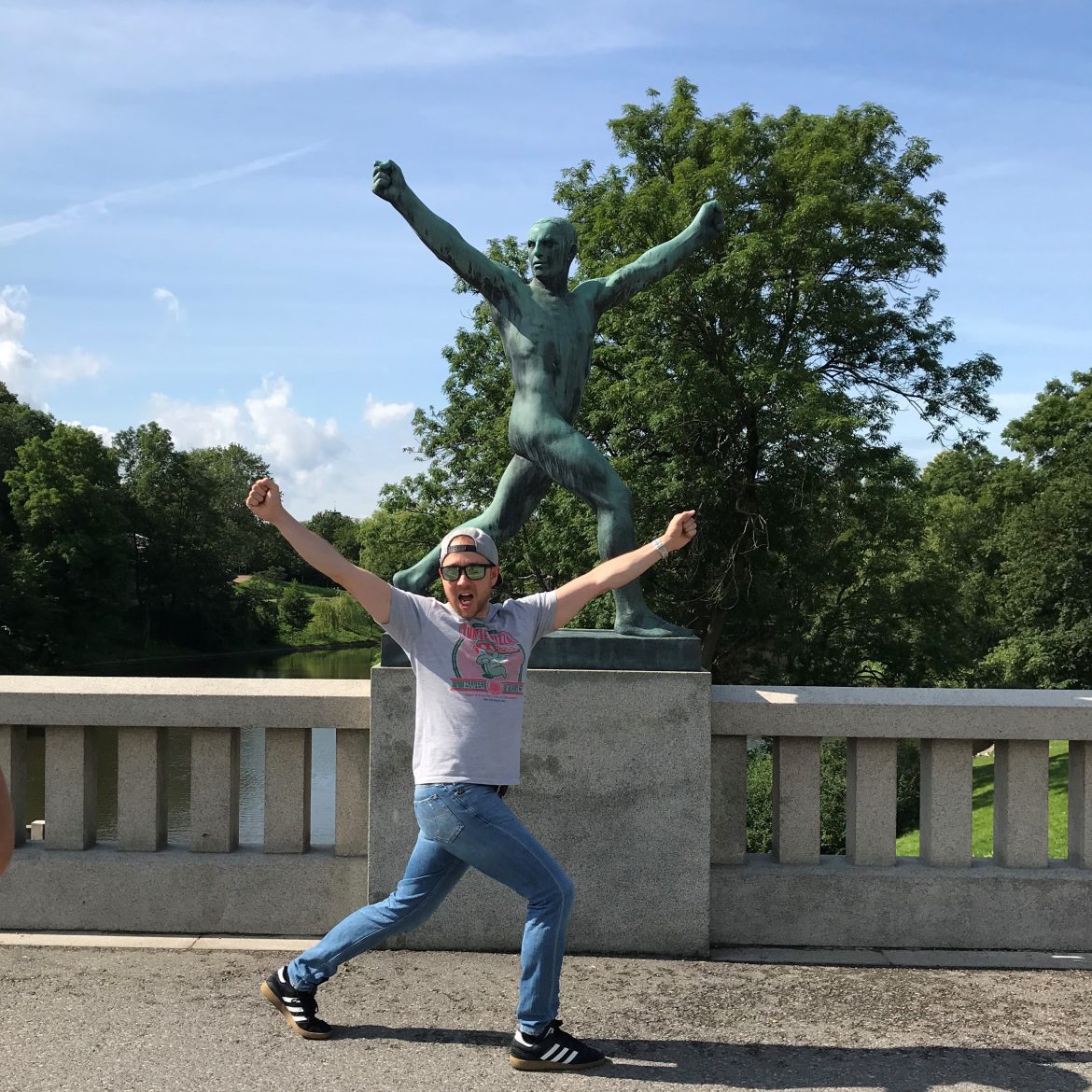


longshot66
These are so weird!
VivianCMurray
What a fantastic sculpture park; I now have a reason to visit Oslo! Thank you for sharing your experience with these magnificent structures, Judith.
Behind the Story
What an abundance of sculptures! Did he have many assistants? I wonder about the 121 intertwined figures. It would take some study to appreciate them all. It would be hard on the neck to look at them all.